Emerging Organizations: The rise and advocacy of EMP communities online
Max Bakony
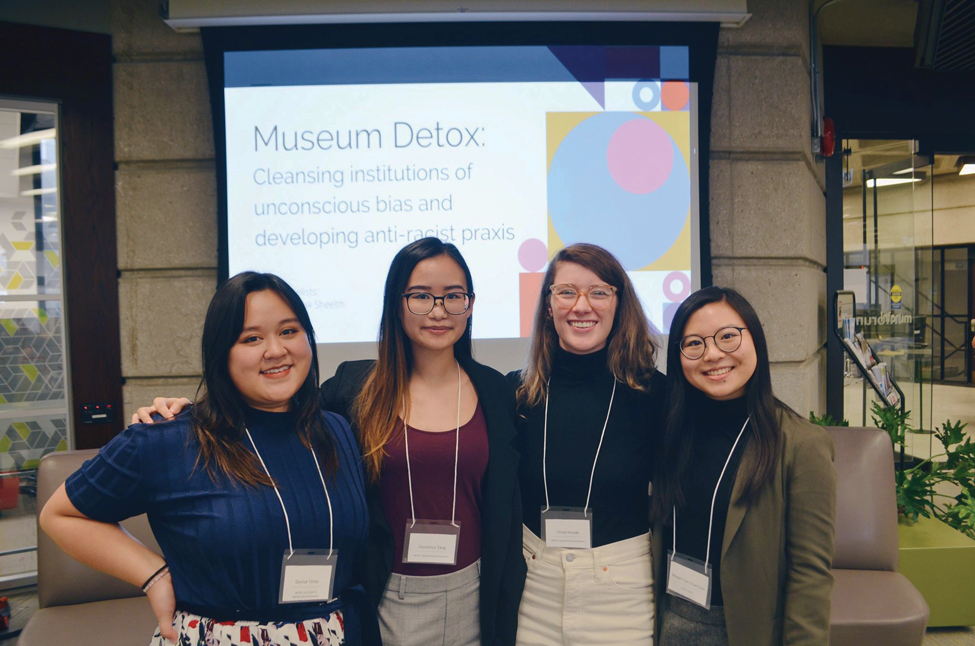
L-R Denise Tenio, Dominica Tang, Chloe Houde, and Megan Sue-Chue-Lam at the Museum Detox panel. Photo — Jaime Meier, Master of Museum Studies Student Association
When Alejandra Paton entered the museum sector, she was working through a year-long program at Humber College in Arts Administration and Cultural Management, in addition to working three different museum jobs, one of which was an unpaid internship.
“In order to afford that unpaid internship, I was working those other two jobs, which speaks to a lot of the privilege needed to even start out in the sector because not everyone can afford to be in an unpaid internship,” says Paton. “Or if you can’t, then you have to work extra hard to be in that spot. So yeah, it was not fun.”
“In order to afford that unpaid internship, I was working those other two jobs, which speaks to a lot of the privilege needed to even start out in the sector because not everyone can afford to be in an unpaid internship,” says Paton. “Or if you can’t, then you have to work extra hard to be in that spot. So yeah, it was not fun.”
Paton has also faced other barriers as an emerging museum professional, such as being a woman trying to move up in an industry predominated by white and male leadership as well as coming from an untraditional background as a professional designer and illustrator without an advanced museum degree.
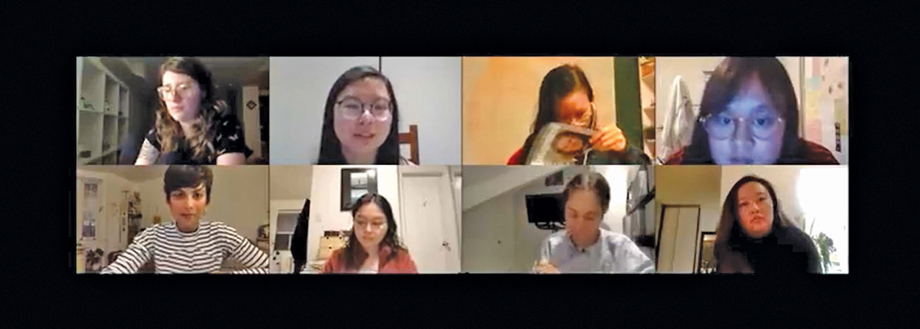
Screenshot from our Zine-Making Workshop & Wellness Discussion with Melina Mehr, which was organized as part of the Diversity and Inclusion in Information Sciences Speakers Series. Led by the Accessibility Interests Working Group and developed in collaboration with the Diversity Working Group at the University of Toronto’s Faculty of Information. Photo — Megan Sue-Chue-Lam, Museum Professionals of Colour

The four founding members reunited after 16 months apart!. Photo — Tristan Tenio
Paton states that museum hiring practices give preference to those with higher education such as a Master’s or a PhD, which comes with consequences to representation: “If we want a more diverse sector with different perspectives, then we need to reach out beyond our traditional avenues to look for the people that we want, and the perspectives that we want.”
She continues: “So, it may be looking slightly outside of the museum sector, maybe not the traditional curators and archivists, but someone who generally works in the arts that can also contribute to work in art galleries and museums.”
Paton is now volunteering tirelessly with Jennifer Ford, a fellow member of the Group of Ontario Emerging Museum Professionals (GOEMP) Committee, to actualize the change they wish they had seen earlier in her career. One of the Committee’s largest focuses lies in wage transparency.
“If you love what you do so much, sometimes you’re willing to work for peanuts,” says Ford. “And then it creates the cycle for other [museums] like, ‘Oh, you were able to hire this person for less. We’re going to try and do the same.”’
“The more we include [wage] at the forefront, the more people will be looking up wages and be more competitive in the future. To build up better and more secure wages in the sector.”

Findings from GOEMP’s survey of 83 Ontarian Museum professionals about their current employment status during the COVID-19 pandemic. Graphic provided by Jennifer Ford of the GOEMP.
Like most sectors, the museum industry has struggled to provide steady available work for emerging professionals, especially in recent years and during the COVID-19 pandemic.
According to a survey of predominantly emerging museum professionals which the GOEMP conducted from November to December of last year, over 20 per cent of their Ontarian respondents were unemployed, nearly 60 per cent applied for government financial assistance, and less than half currently hold full-time positions.
Some fields within the museum sector are being hit even harder.
“I only heard of about three Young Canada Works funded positions that were conservation specific within the last 12 months,” says Jill Baron, vice-chair of the Emerging Conservators Committee.
“There are basically no entry-level positions or opportunities for emerging conservators to gain experience,” says the Committee’s chair, Raene Poisson. “With this and the effects of the pandemic, we feel there will be severe loss of conservators in this career path.”
According to CMA’s YCW Program Managers Mark Poirier and Nathan Hasselstrom, this is reflected in the records of the CMA’s YCW program. Poirier mentions, “There is no delivery organization within the YCW program that is specifically dedicated to funding conservation jobs and for the CMA, applications for conservation-based positions are very rare, even within the longer-term BCH internships stream.”
Hasselstrom then added that a small quota of BCH funding is reserved for Conservation Science positions and encourages museums with opportunities for emerging conservators to apply as it can increase your chances of having funding approved.
In response, groups across North America like the GOEMP and the ECC have tackled this past year with more vigour than ever before.
And the momentum applies internationally as well. For example, the National Emerging Museum Professionals Network (NEMPN, a not-for-profit in the United States of America), began over a decade ago but evolved significantly this past year. Last July, they went through a leadership change bringing aboard Sierra Van Ryck de Groot and Sierra Polisar as co-Presidents to rebuild and rebrand the organisation
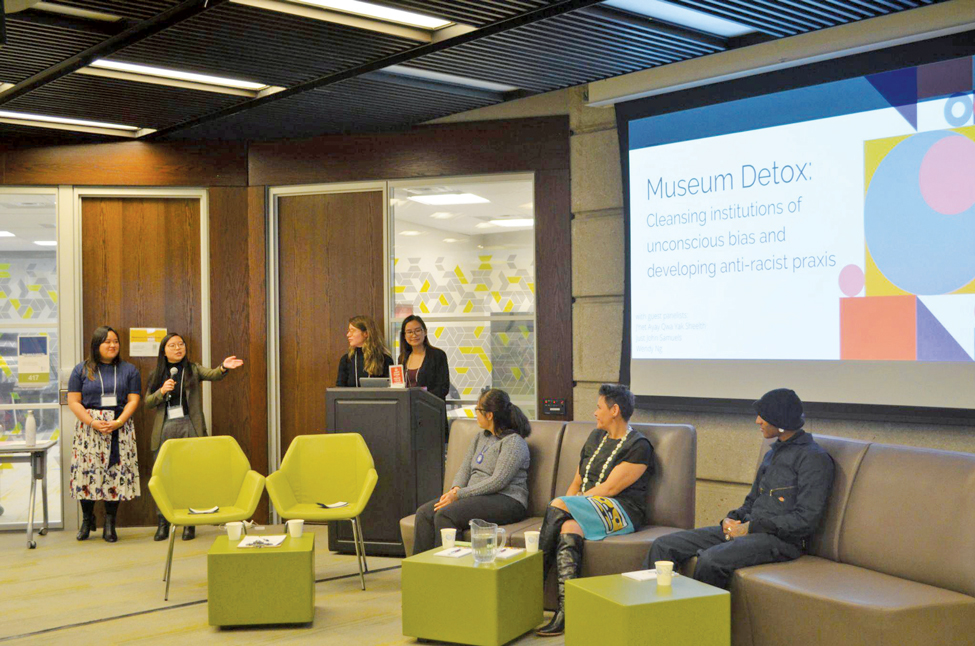
Presenting speakers (L-R Wendy Ng, J’net Ayaykwayaksheelth, Just John) at our inaugural event, the Museum Detox panel. This panel was presented in collaboration with the Master of Museum Studies Student Association. Photo — Jaime Meier, Master of Museum Studies Student Association
With over 40 chapters across the USA, Polisar says the pandemic has helped to unite their group from all over the country.
“A big new thing that we did was make all of our board members into regional chairs. So as a way to capture and communicate with individual chapters all over the country, they kind of have their one person that is their liaison,” says Polisar. vWorking together in unison is something that Polisar says has been very effective for them by providing guidelines and tips for how to be successful, as well as pairing different chapters to create programming for EMPs together.
Though much of their operations have been revitalized through more clear leadership, representation, and cooperation, Polisar acknowledges that much of what they’re fighting for will not and has not changed overnight. This includes the familiar focus on wage and salary transparency, which a former President of NEMPN began working on over eight years ago.
“The field has been due for a reckoning for a while, and I think salary transparency is just one step of it. When people say they’re going to join the museum field, I think one of the first pieces of advice you get is that you may love this job, you may love this field. You’re not going to get money,” says Polisar.
Yet, as mentioned earlier, wage transparency is far from the only issue in the museum industry that needs addressing and that has been underlined by the ongoing pandemic. As a result, new groups like the University of Toronto-based Museum Professionals of Colour (MPOC) are coming together to tackle systemic racism in the sector.
“The idea to form this group came out of a need to support ourselves as a small minority of people of colour within our very white Museum Studies program,” says MPOC co-founder Megan Sue-Chue-Lam. “I had been feeling very isolated during my first year and didn’t really see myself reflected in the program or the field. On top of that, I wondered why we were learning about how to work with minoritized groups without hearing from them directly.”
After an isolated term behind her, in the Spring of 2020, Sue-Chue-Lam reached out to her fellow co-founders Chloé Houde, Denise Tenio, and Dominica Tang to form the group.
“As a cohort, there were times when we were told by our instructors to ‘check our white privilege,’ despite the fact that this didn’t apply to all of us,” says Tenio. “I often joke about questioning if I actually was white throughout the first couple of months of starting our degree, but there is some truth to this joke… I mean how else are IBPOC [Indigenous, Black, and People of Colour] students expected to feel, being addressed monolithically as ‘emerging museum professionals’ while equating the term to whiteness?”
What was originally intended as a support group quickly turned into much more. The group began hosting support events, providing mentorship for other MPOCs, ‘calling-in’ museums to act on their practices which perpetuate systemic racism, and collaborating with U of T’s Faculty of Information, including the Diversity Working Group, the Indigenous Solidarity Working Group, and the Accessibility Interests Working Group to publish a report on inclusion experiences in the Faculty based on anonymous data collected from students and alumni.
Despite all the progress they’ve made, MPOC still feels that have a lot to do in reaching more museum professionals nationally. In addition to their own planned expansion, they hope that working with other established groups will bring about the kind of supportive environment necessary to create change.
“Collaboration between groups would be incredibly helpful. Struggles that people face in this sector are more interrelated and rampant than many realize,” says Houde. “Having more wide-ranging solidarity, support and a collaborative strategy would do wonders in addressing these challenges.”
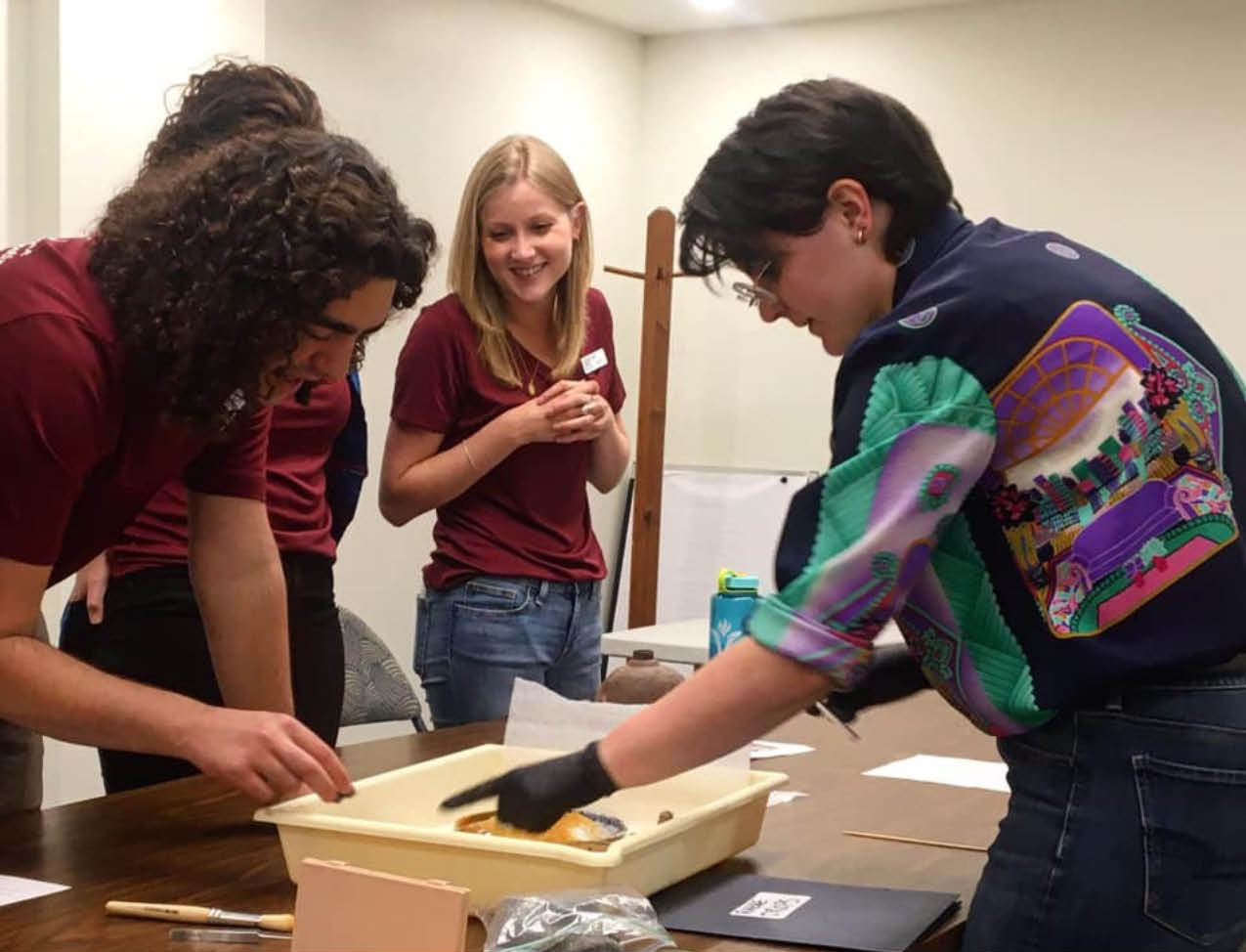
Raene showing examples of different types of iron corrosion on objects and how to prevent it in museum collections. 2020. Museum of the Cariboo Chilcotin. William’s Lake, BC. Photo — Davana Mahon.
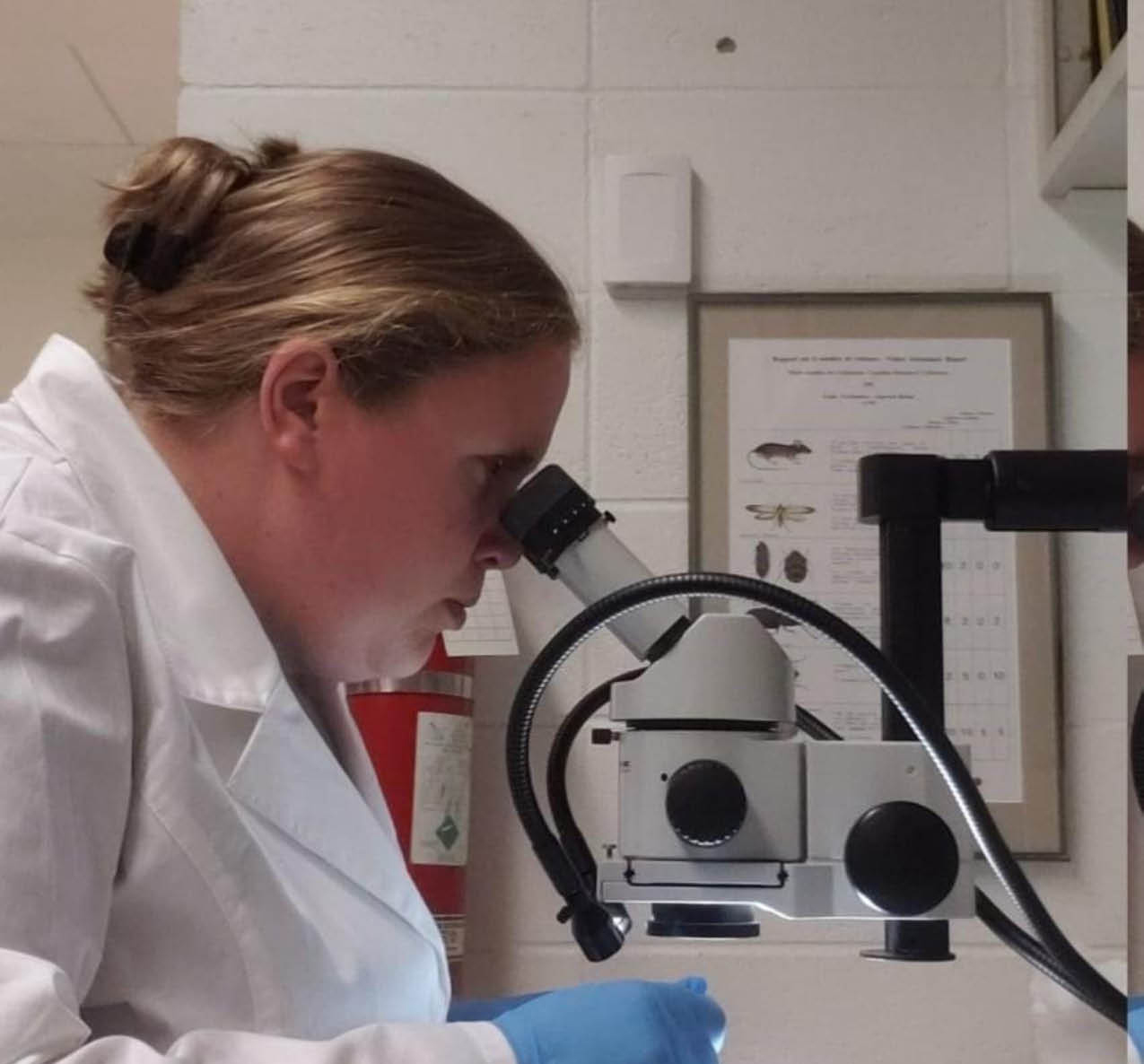
Jill using a light microscope to inspect objects. 2019. Canadian Museum of History, Gatineau, Quebec. Photo — Jill Baron
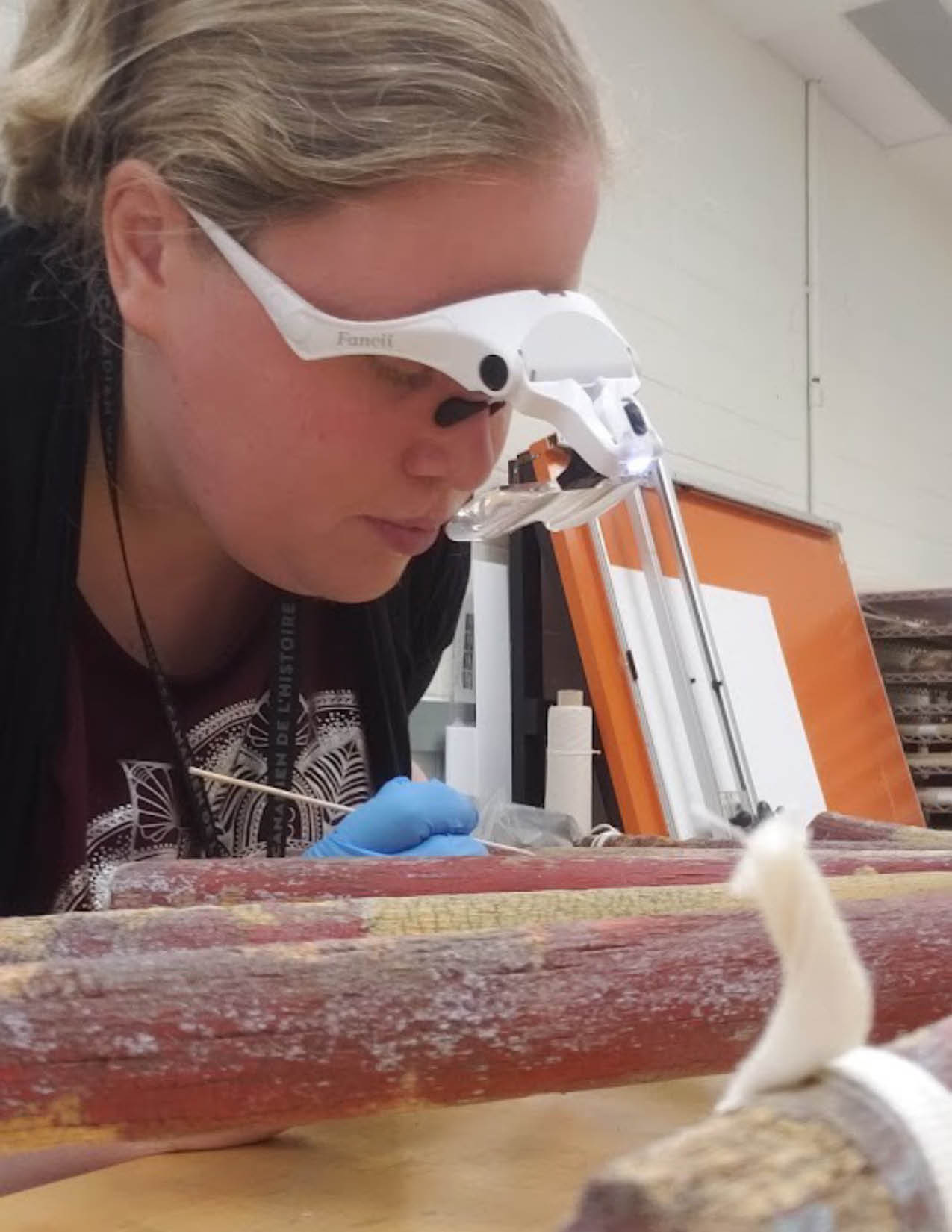
Jill performing paint consolidation on wood folk art. 2019. Canadian Museum of History, Gatineau, Quebec. Photo — Jill Baron

Jill dry cleaning the original Treehouse from the CBC kids television shows Mr Dressup and Butternut Square with PPE. 2019. Canadian Museum of History, Gatineau, Quebec. Photo — Amanda Gould

Raene snapping a photo of herself in PPE before diving into mold remediation. 2021. Museumpros Art Services. Toronto, ON. Photo — Raene Poisson
For emerging conservators, working in a niche field has brought about a similar desire for connection, “I feel isolation and imposter syndrome are heavily prevalent in emerging conservators — unless you live in a big city centre like Ottawa, you may never interact with another conservator in person for months, or years!” says ECC chair Poisson.
However, a straightforward solution is proposed, “I think the first step is just to reach out to each other and talk. It is easier to act more inclusively when people know each other and know what each other’s goals are,” says Baron, ECC vice-chair. “I also believe it reminds us we all share the same passion for culture and heritage, otherwise we wouldn’t be in this field.” M
